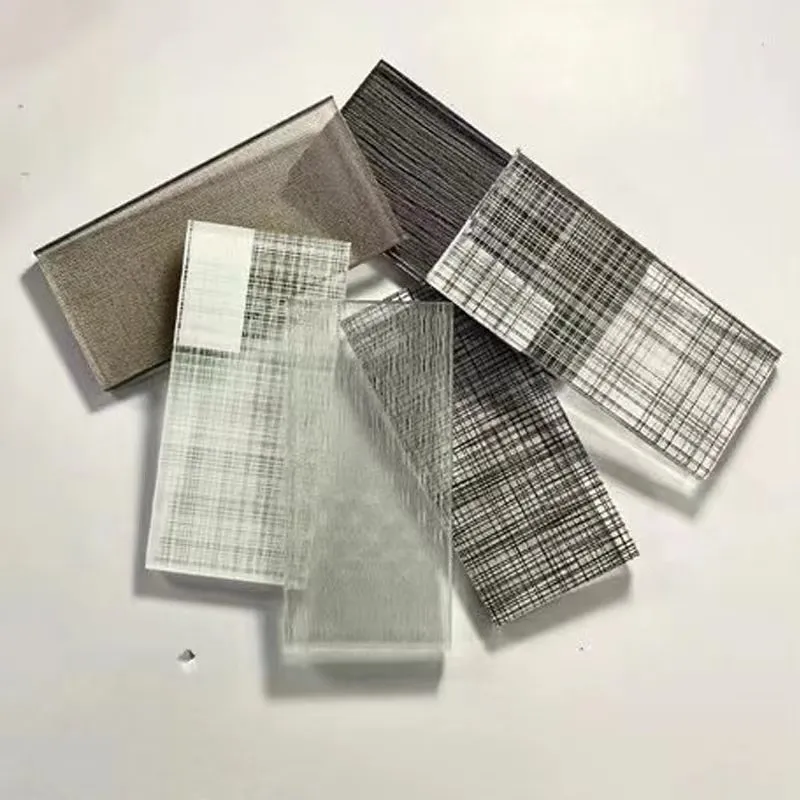The Cost of Toughened Glass A Comprehensive Overview
Toughened glass, also known as tempered glass, is a type of safety glass that has been treated by controlled thermal or chemical processes to increase its strength compared to normal glass. This enhancement makes toughened glass an ideal choice for various applications, from facades and windows to shower doors and tabletops. However, one of the primary considerations when deciding whether to use toughened glass in a project is its cost. This article delves into the factors influencing the cost of 10mm toughened glass, shedding light on its pricing dynamics.
Understanding Toughened Glass
Before discussing cost, it’s essential to understand what toughened glass is and why it is favored in construction and design. The toughening process involves heating the glass to over 600 degrees Celsius and then cooling it rapidly. This treatment creates a balance between internal and external stresses in the glass, significantly enhancing its strength. For instance, toughened glass is approximately five to six times stronger than standard glass of the same thickness, making it less likely to shatter under impact.
Cost Factors of 10mm Toughened Glass
When evaluating the price of 10mm toughened glass, several factors come into play, including manufacturing processes, material quality, and additional treatment options.
1. Manufacturing Process The production of toughened glass is more complex than that of standard glass. This complexity leads to higher production costs. The glass must be heated and cooled in specialized ovens, which require significant energy and controlled environments. These manufacturing expenses directly influence the final price.
cost of toughened glass 10mm
2. Material Quality The type of raw materials used also affects the cost. High-quality silica sand and other raw materials that meet specific standards tend to be more expensive. The purity of these materials not only impacts the price but also the performance characteristics of the final product, such as clarity and resistance to corrosion.
3. Size and Thickness Thickness plays a significant role in determining price. While 10mm toughened glass is a standard thickness used in many applications, larger pieces or custom shapes can drive prices higher due to the increased handling and processing requirements.
4. Treatment and Finishing Additional treatments, such as coating or etching, can also add to the cost. These options enhance performance, improve aesthetics, or provide UV protection, but they do come at a price. For example, low-emissivity (Low-E) coatings can increase the thermal efficiency of glass, yet their application leads to an increase in overall costs.
5. Market Demand and Supply Like any other commodity, the pricing of toughened glass is also influenced by market dynamics. Increased demand in construction, architecture, and home improvement can drive prices upwards. Likewise, fluctuations in the availability of raw materials can impact costs.
Conclusion
In summary, while the cost of 10mm toughened glass may be higher than standard glass, its enhanced safety features and durability justify the investment in many scenarios. Understanding the various factors that influence its pricing can help consumers and professionals make informed decisions when selecting materials for their projects. Whether for a commercial building façade or a stylish shower enclosure, the cost of toughened glass reflects its quality, manufacturing processes, and the value it brings to safety and design. In a world prioritizing both aesthetics and security, toughened glass stands out as a worthy choice.
 Afrikaans
Afrikaans  Albanian
Albanian  Amharic
Amharic  Arabic
Arabic  Armenian
Armenian  Azerbaijani
Azerbaijani  Basque
Basque  Belarusian
Belarusian  Bengali
Bengali  Bosnian
Bosnian  Bulgarian
Bulgarian  Catalan
Catalan  Cebuano
Cebuano  Corsican
Corsican  Croatian
Croatian  Czech
Czech  Danish
Danish  Dutch
Dutch  English
English  Esperanto
Esperanto  Estonian
Estonian  Finnish
Finnish  French
French  Frisian
Frisian  Galician
Galician  Georgian
Georgian  German
German  Greek
Greek  Gujarati
Gujarati  Haitian Creole
Haitian Creole  hausa
hausa  hawaiian
hawaiian  Hebrew
Hebrew  Hindi
Hindi  Miao
Miao  Hungarian
Hungarian  Icelandic
Icelandic  igbo
igbo  Indonesian
Indonesian  irish
irish  Italian
Italian  Japanese
Japanese  Javanese
Javanese  Kannada
Kannada  kazakh
kazakh  Khmer
Khmer  Rwandese
Rwandese  Korean
Korean  Kurdish
Kurdish  Kyrgyz
Kyrgyz  Lao
Lao  Latin
Latin  Latvian
Latvian  Lithuanian
Lithuanian  Luxembourgish
Luxembourgish  Macedonian
Macedonian  Malgashi
Malgashi  Malay
Malay  Malayalam
Malayalam  Maltese
Maltese  Maori
Maori  Marathi
Marathi  Mongolian
Mongolian  Myanmar
Myanmar  Nepali
Nepali  Norwegian
Norwegian  Norwegian
Norwegian  Occitan
Occitan  Pashto
Pashto  Persian
Persian  Polish
Polish  Portuguese
Portuguese  Punjabi
Punjabi  Romanian
Romanian  Russian
Russian  Samoan
Samoan  Scottish Gaelic
Scottish Gaelic  Serbian
Serbian  Sesotho
Sesotho  Shona
Shona  Sindhi
Sindhi  Sinhala
Sinhala  Slovak
Slovak  Slovenian
Slovenian  Somali
Somali  Spanish
Spanish  Sundanese
Sundanese  Swahili
Swahili  Swedish
Swedish  Tagalog
Tagalog  Tajik
Tajik  Tamil
Tamil  Tatar
Tatar  Telugu
Telugu  Thai
Thai  Turkish
Turkish  Turkmen
Turkmen  Ukrainian
Ukrainian  Urdu
Urdu  Uighur
Uighur  Uzbek
Uzbek  Vietnamese
Vietnamese  Welsh
Welsh  Bantu
Bantu  Yiddish
Yiddish  Yoruba
Yoruba  Zulu
Zulu 

